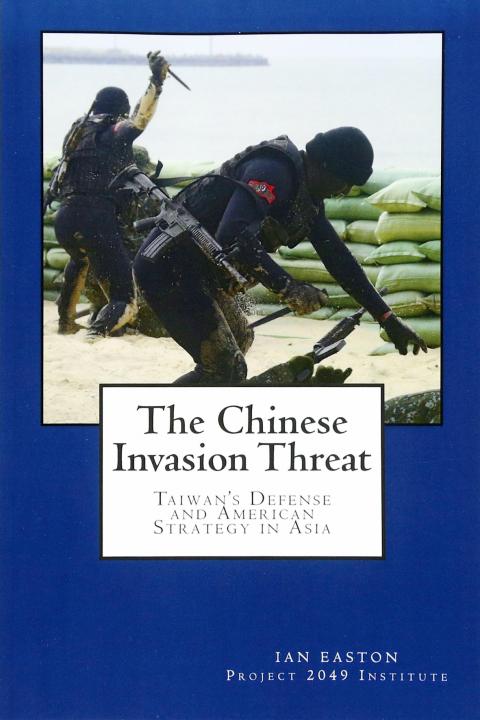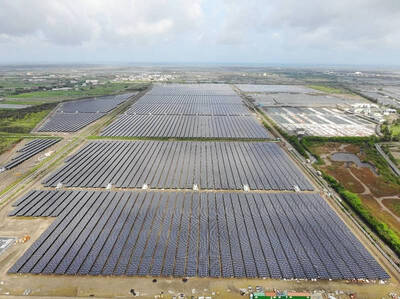Taiwan and its future are always sensitive topics, in the US, China and in the nation itself.
Its complicated history is often a source of confusion to policymakers around the world, who for many decades only heard the two opposing and conflicting “one China” narratives from Mao Zedong’s (毛澤東) Chinese Communist Party (CCP) and Chiang Kai-shek’s (蔣介石) Chinese Nationalist Party (KMT).
However, in the late 1980s and early 1990s, the people of Taiwan forged a momentous transition to a dynamic and vibrant democracy, eager to cast off the bonds of the past, and anxious to be accepted in the international community as a full and equal member.

However, Mao’s political descendants in Beijing still perceive Taiwan as an unfinished piece of business from their Chinese Civil War against the KMT, and thus Taiwan still dangles in international isolation. Most nations, including the US, have refrained from normalizing relations with Taiwan for fear of offending authoritarian China.
Since the founding of the Peoples Republic of China (PRC) in 1949, Beijing has been attempting to isolate Taiwan and pull it into its orbit, with the purpose of eventual “unification” — which is odd because Taiwan was never part of the PRC, as prior to its 1945 occupation by the KMT it was a Japanese colony.
Beijing is utilizing a wide range of tools to try to achieve its goals: political, diplomatic, economic and military. In this book, US scholar Ian Easton focuses on the military aspects — based on internal documents of the Chinese Peoples’ Liberation Army (PLA). He describes a detailed scenario of how the PLA plans to go about an amphibious invasion of Taiwan.
While the threat of a Chinese invasion has been bandied around by analysts for decades, this is the first time a scholar has pieced together how it could actually work — and how it could fail.
Easton starts by giving a sobering picture of the PRC’s intentions and capabilities regarding Taiwan. He then goes through a detailed scenario (down to the level of individual army divisions, brigades and regiments, navy and air force squadrons) of how the PLA would go about planning and implementing an invasion — under ideal circumstances.
Easton then details what could go wrong with an invasion of such massive scale (up to 1 million men) across such a wide body of water — the 177km-wide Taiwan Strait is known for its treacherous weather and Easton argues that there are only two brief periods, April and October, when the weather conditions would be favorable to such a large-scale operation.
HOME ADVANTAGE
In addition, Easton describes Taiwan’s rocky coastline as quite inhospitable to an invading force, while the few beaches that would lend themselves to large-scale landings are heavily defended. He points to areas in intelligence, personnel and equipment where an invasion would be likely to go wrong.
Easton then describes how Taiwan would prepare, and fight such an attack. He details three phases: mobilization and force preservation, joint interdiction and homeland defense. He emphasizes that although the invading PLA forces would have numerical superiority, the Taiwanese defenders would have the home advantage and would likely hold off or even severely cripple the invaders. He concludes an invasion is likely to fail, even in the absence of US intervention.
This brings us to the US role in a potential conflict. Easton devotes a whole chapter to the American strategy in Asia. He describes how Taiwan, not only because of its location but also due to its shared liberal values and position as a key trading partner, is of strategic importance to the US.
Easton argues that US obligations under the 1979 Taiwan Relations Act (TRA), while not as binding as a mutual defense treaty, would strongly compel the US to side with Taiwan in case of a military attack by China. The TRA even specifies that the US will maintain the capacity to resist “any effort to determine the future of Taiwan by other than peaceful means, including by boycotts or embargoes,” or “…any resort to force or other forms of coercion that would jeopardize the security, or the social or economic system, of the people on Taiwan.”
REDEFINING RELATIONS
Easton recommends the US think through its response to a possible invasion, but also understand how China “thinks about war so they [the US] can effectively induce or coerce [China] away from it, to do things that make it less tempting.”
“Calculations of possible war outcomes in all possible scenarios must always be so unfavorable to Chinese leaders that they do not perceive any incentive to initiate an attack,” he adds. “Elevating the role of Taiwan in US strategy would likely prove to be the single most effective means of signaling resolve and purpose, diminishing the likelihood of a potentially cataclysmic regional conflict.”
Easton argues that it is essential to redefine the political framework of relations with Taiwan for such a defensive strategy to work. He suggests Washington rephrase its official position along the lines: “The status of Taiwan remains to be determined, by peaceful means. The objective reality is that Taiwan’s democratic government exists, and our policy is to treat Taiwan with respect and dignity, and provide it more international space.”
He concludes that under such a framework, the US government could continue to maintain unofficial relations with Taiwan, while gradually normalizing diplomatic contacts over time.
“Incrementally,” he adds, “improving bilateral relations between Washington and Taipei is the best available way to avoid military confrontation with China while advancing the American interest in securing Taiwan from hostile takeover.”
The book is concise, prescient and a must-read for policymakers and military planners alike.

Every now and then, it’s nice to just point somewhere on a map and head out with no plan. In Taiwan, where convenience reigns, food options are plentiful and people are generally friendly and helpful, this type of trip is that much easier to pull off. One day last November, a spur-of-the-moment day hike in the hills of Chiayi County turned into a surprisingly memorable experience that impressed on me once again how fortunate we all are to call this island home. The scenery I walked through that day — a mix of forest and farms reaching up into the clouds

With one week left until election day, the drama is high in the race for the Chinese Nationalist Party (KMT) chair. The race is still potentially wide open between the three frontrunners. The most accurate poll is done by Apollo Survey & Research Co (艾普羅民調公司), which was conducted a week and a half ago with two-thirds of the respondents party members, who are the only ones eligible to vote. For details on the candidates, check the Oct. 4 edition of this column, “A look at the KMT chair candidates” on page 12. The popular frontrunner was 56-year-old Cheng Li-wun (鄭麗文)

“How China Threatens to Force Taiwan Into a Total Blackout” screamed a Wall Street Journal (WSJ) headline last week, yet another of the endless clickbait examples of the energy threat via blockade that doesn’t exist. Since the headline is recycled, I will recycle the rebuttal: once industrial power demand collapses (there’s a blockade so trade is gone, remember?) “a handful of shops and factories could run for months on coal and renewables, as Ko Yun-ling (柯昀伶) and Chao Chia-wei (趙家緯) pointed out in a piece at Taiwan Insight earlier this year.” Sadly, the existence of these facts will not stop the

Oct. 13 to Oct. 19 When ordered to resign from her teaching position in June 1928 due to her husband’s anti-colonial activities, Lin Shih-hao (林氏好) refused to back down. The next day, she still showed up at Tainan Second Preschool, where she was warned that she would be fired if she didn’t comply. Lin continued to ignore the orders and was eventually let go without severance — even losing her pay for that month. Rather than despairing, she found a non-government job and even joined her husband Lu Ping-ting’s (盧丙丁) non-violent resistance and labor rights movements. When the government’s 1931 crackdown